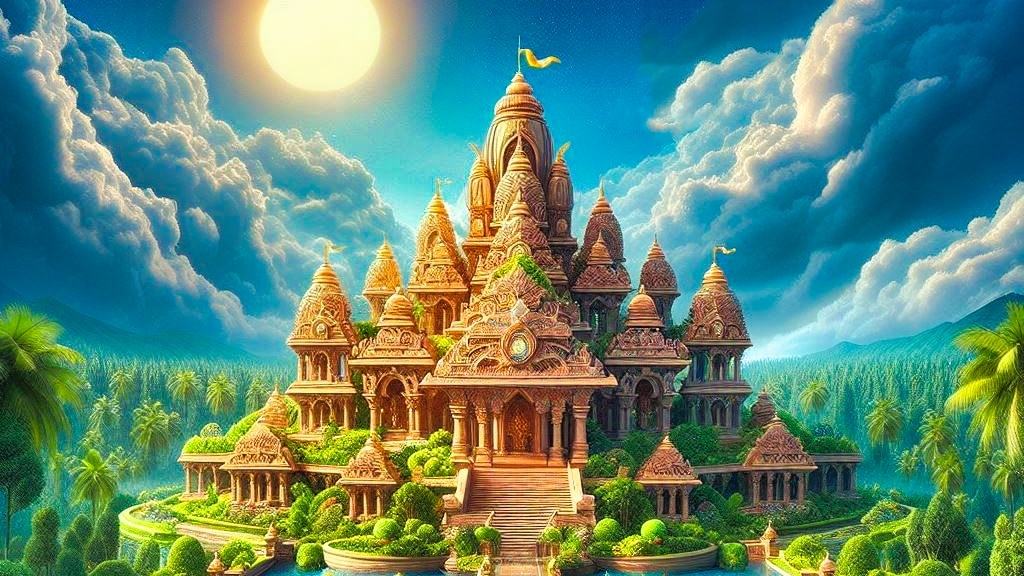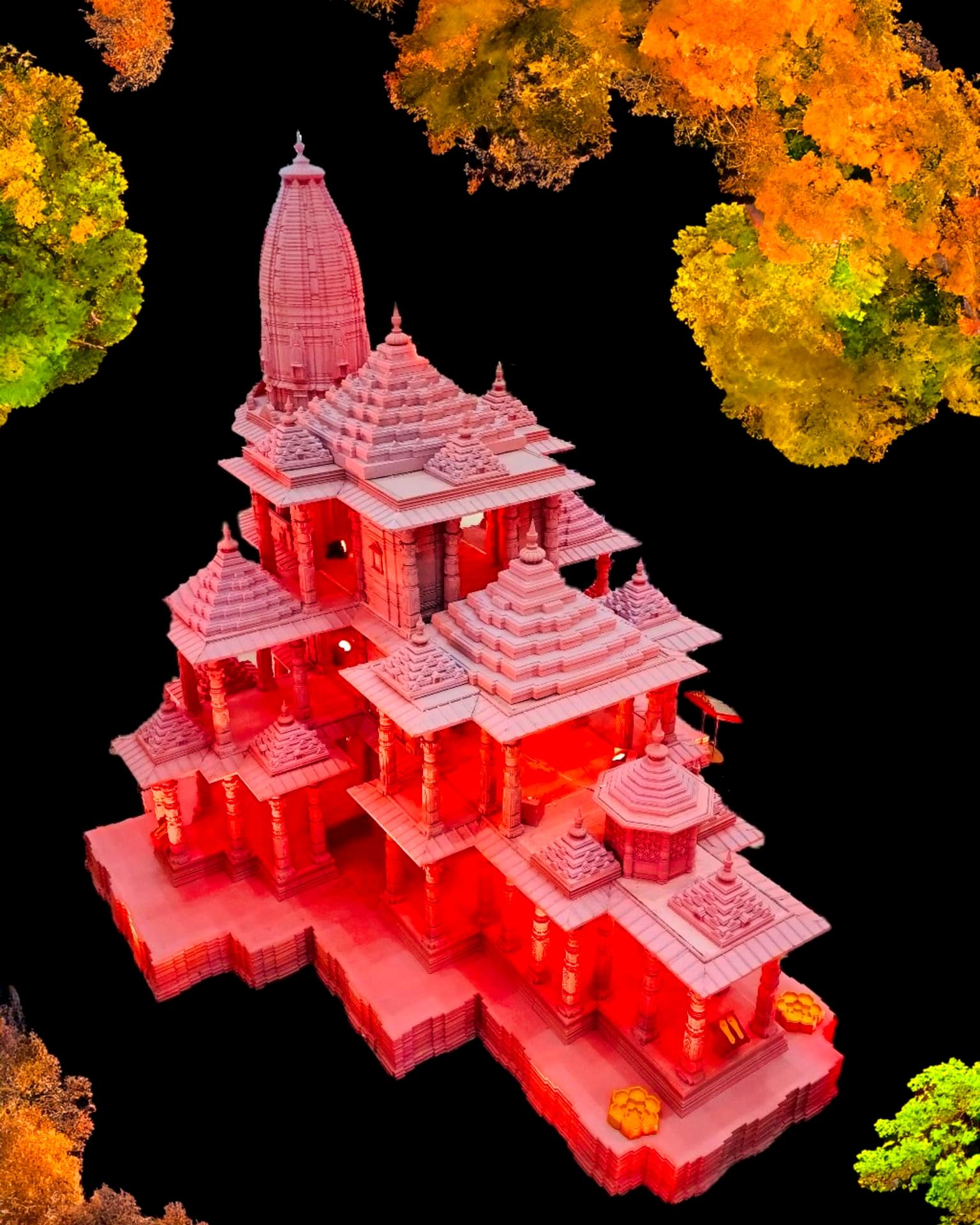Preface
The Ayodhya land dispute case was going on for many years. Finally, the verdict of this case was given in favor of Hindus on November 9, 2019 CE by a 5-judge constitution bench. The decision was made based on a study and research report on the land of this temple and the remains of the mosque.
After this historic decision, the date of August 5, 2020 CE was recorded in golden letters. In the hands of Shri Narendra Modi the foundation ceremony was carried out, then the construction of Ram temple started in Ayodhya.
History of Rama Temple of Ayodhya
But do you know, how much history is there behind this miracle that we are witnessing? In this article we are going to see the history of the Rama temple of Ayodhya.
Disputes over the Temple
In this history of the temple, there were many disputes sometimes over the place, sometimes over worship and sometimes over the remains of the temple. Accordingly, temporary solutions were also drawn on it according to the time.
But this land dispute was not so easily resolved. But how did this question arise? To get the answer to this we have to understand the 496 years of the history of Ayodhya.
According to local people, this temple was first built by a son of Rama, Kush at his birthplace. It has since been restored many times. There are records of its restoration by King Vikramaditya in the 5th century BCE.
Demolition of Rama Temple of Ayodhya

The general of Babar, Baqi Tashqandi, was also known as Mir Baqi. According to an inscription found in the ruins of the Babri Masjid, this Mir Baki destroyed the Rama temple on the orders of Babur and built a three-domed mosque in its place. The mosque was named Babri Masjid after the name of Babur.
According to my online literary research and according to Kishore Kunal, author of the book “Ayodhya Revisited”, this inscription is fake and Babur never came to Ayodhya, he never ordered to demolish the temple and build a mosque in its place.
Rama Temple was demolished long after the reign of Babur in 1660 CE.
At that time, Aurangzeb was ruling, and Fedai Khan was the governor of Ayodhya. Fedai Khan, on order of Aurangzeb, demolished the temple and built a large three-domed mosque here.
One of the reasons why this claim seems correct to me is that the reign of Babur in India was very short of only four years. So probably it is not enough time for him at his time to explore, demolish and build new structure in such short reign. So it does not seem to have happened in his time.
According to TimesOfIndia, all rulers from Babar to Shah Jahan were religiously liberal to some extent. After Aurangzeb ascended the throne, however, he adopted a hard-line Muslim policy. So after coming to the throne, he started forcibly converting other religions, destroying temples and vandalizing temples.
Therefore, the destruction of the Rama temple in Ayodhya and the construction of the mosque in its place must also have taken place during this period.
As the court needs evidence in place, so the court considered the report on the inscription as evidence and gave this important decision.
Efforts of Rajput King Jai Singh II
Rajput king Jai Singh II knew the importance of this place to Hindus. So, in 1717 CE, he tried to Mughal Emperor Farrukh Siyar to get possession of this place.
At that time, while their relationship with Mughal was good, he still did not get that place. Therefore, he built a Rama Chabutra near the mosque, so that the Rama devotees can worship at least in Ayodhya.
Claims of Hindu Organizations
Then, around 1813 CE, these Hindu organizations first claimed that Babur demolished the temple and built a mosque in place of the Rama temple.
The British authorities of Faisabad also speculated that on this place of mosque previously there must have been a temple, as Hindu artifacts were found in their reports.
Senior advocate Vaidyanathan submitted the report of Montgomery Martin to the court. According to the survey of Babri Masjid in his book, he said that the pillars were not seems to be of Muslim architecture.
According to him, the pillars of the temple itself must have been used in the construction of the mosque.
Important events happened after the claim of Hindu Organizations

- During the reign of Nawab Wajid Ali Shah in 1853 CE, the first major riot took place here. In the year 1955 CE, worship was allowed outside the mosque.
- Then in 1859 CE, the British built a fence around this place. According to Hindu locals, the place holds significance as the birthplace of Rama consider just below the three domes structure of the mosque. Where only Muslims were allowed to pray.
- Then in 1885 CE, Hindu organizations appealed to the court. Mahant Shri Raghuveer Das of Nirmohi Akhara sought permission to build a roof on Rama Chabutra. However, his demand was rejected by the court.
- Due to the riots of 1934 CE, one wall of the mosques was destroyed. After that wall was completely built, but prayers used to be held inside Masjid were stopped.
- In 1949 CE, the controversy took a different turn. Because, an idol of Lord Rama was found in the mosque. Muslims believe Hindu people kept that idol was inside while Hindus believe that Shri Rama himself appeared there. After that, no one dared to remove the idol, as doing so would lead to riots again.
- In 1950 CE, the Nirmohi Akhara made two demands to the court, the first was to worship Ramlalla and the second was to place an idol of Lord Rama in this place.
- After that UP Sunni Waqf Board in 1961 CE, a demand application was filed for taking possession of the mosque site and removing the idol.
- For the first time in 1984 CE, Vishwa Hindu Parishad a committee was formed to establish a temple at this place.
- Faizabad District Judge K. M. Pandey on the petition of U. C. Pandey, on the day of February 1, 1986 CE ordered to remove the lock on the structure and allowed Hindus to worship in its place.
- On this day of December 6, 1992 CE, lakhs of activists of Vishwa Hindu Parishad, Shiv Sena, and other Hindu organizations demolished the Babri Masjid. These activists were called Karsainiks.
- In 2002 CE, a train coach carrying Hindu passengers caught fire at Godhra while returning from a Yagya held at Ayodhya. In which 59 Hindu people died. This was followed by widespread riots in Gujarat, in which more than 2000 people died.
- Allahabad High Court in 2010 CE, it was ordered to distribute three equal shares between Rama Lalla Virajman, Nimohi Akhara and Sunni Waqf Board.
- In 2011 CE, Hindu organizations appealed to the Supreme Court. Hence, the Supreme Court stayed the implementation of the verdict given by Allahabad High Court on the Ayodhya dispute.
- Then in the year of 2017 CE the court appealed to discuss the matter among themselves and settle it out of court. Meanwhile, senior BJP leaders were again accused of conspiracy.
- The Supreme Court on March 8, 2019 CE, the matter was referred to arbitration for completion of proceedings within 8 weeks.
- On the day of August 1, 2019 CE, Mediators submitted the report of both the panels to the court.
- After that, on August 2, 2019 CE, the court confirmed that the case referred to arbitration had failed to resolve.
- In order to complete the hearing of the Ayodhya land dispute case at the earliest, the Supreme Court has started daily hearings from August 6, 2019 CE.
- The hearing of the case was completed by the Supreme Court on August 6, 2019 CE, but the court reserved the decision for re-examination.
- On November 9, 2019 CE, a five-judge bench ruled in favor of the Hindu party. 2.77 acres of mosque land was got for Rama Mandir and 5 acres of separate land was ordered to provide for the building of a new mosque.
- Given the importance of the land to Hindus, as well as a report by the Archaeological Survey of India (ASI) confirming the presence of a Hindu temple earlier, the decision was in favor of the Hindus. But this decision ordered them to be given separate land so as not to shock the Muslim community and their faith.
- After almost 28 years, on March 25, 2020 CE, Nickel Fiber shifted from Rama Lalla Mandapam to Temple.
- On August 5, 2020 CE, the Bhoomi Pujan program of Rama Temple was finally conducted by Prime Minister Shri Narendra Modi.
On this occasion, RSS Sarsanghchalak Mohan Bhagwat, UP Chief Minister Yogi Adityanath and many Rishi-Muni including 175 other important persons were invited. After first visiting Hanumangadhi, Modi participated in the Bhoomi Pujan program of Rama Temple.
Images Credits
Ram Temple Replica Model, Credit: DTM, Source: Wikimedia
About the Author

Ashish Salunke
Ashish is a skilled biographer and content writer specialized in crafting captivating historical narratives. Through HistoricNation, he skillfully merged his IT expertise with the art of storytelling.
